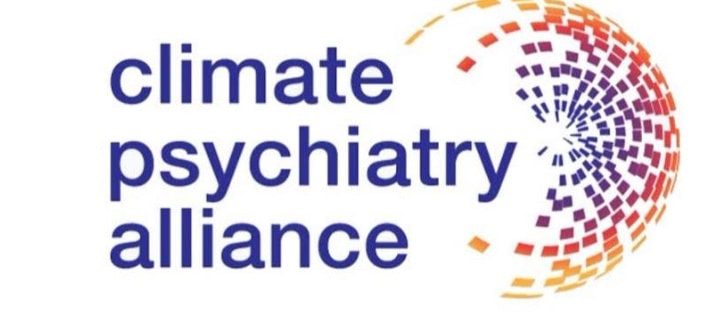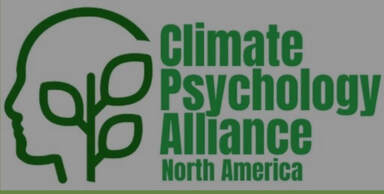|
ABOUT DENITA BENYSHEK, PHD, LMHC, MFA, MA
I practice psychotherapy as a means of expressing love and caring. During the process of counseling, I form a trusting partnership with my clients. I am inspired by my clients' abilities to seek help, gain insight, feel deeply, and change profoundly. Together, we celebrate as they regain joy, learn how to navigate waves of emotion and memory, find contentment through release of worry, and live fully in the present. My training in family systems helps us identify and change maladaptive patterns in your current life. My approach is based in family systems, supported by ideas and techniques from humanistic and transpersonal psychology, including studies of shamanism, enriched by the use of metaphor and creativity, strengthened by neurological reprocessing methods for trauma (I am trained in EMDR and Polyvagal theory). If indicated, I can work with a naturopath, using diet changes as well as supplements for neurotransmitter deficiencies, depression, and anxiety. During my career as a professional artist/educator, I decided to develop my talent for psychological healing. I earned a masters degree in psychology, with an emphasis on family systems. A graduate certificate in creativity "married" my two loves, art and psychology, and this relationship deepened during my doctoral studies in humanistic and transpersonal psychology. I later studied pain management at the Mayo Clinic in Rochester, MN, and neurological trauma reprocessing (EMDR). I continue to study trauma treatment, naturopathic methods of alleviating depression and anxiety, as well as jazz vocals. My work as a psychotherapist is a natural extension of my research and artistic creativity. I bring my ability to focus and concentrate for extended periods of time to our meetings. I am comfortable with intuition, reflection, incubation of ideas and possibilities. I enter deeply into creative flow while working with clients, understand of the importance of rhythm, pacing, and timing, and use creative processes to facilitate client transformation. Because each trauma is different, and each client is different, my skills, training, and experience allows me to craft a different approach with each client. Instead of a mechanistic, factory assembly line approach, I am keenly sensitive to where you are now, what you need now, and highly aware of your leading edge of growth. With PTSD treatment, it's important to know how to go in, when to go in, how far to go in, when to break, pause, and back out, then how to process what has come up. There are many similarities to live jazz improvisation! I am from an immigrant family, Moravian Czechs, and I enjoy working with clients from many countries, regions, ethnic groups, social classes, religions, and sexual orientations. Amazing. Decades of meaningful life experience provided a kind of wisdom that is not taught in any school. FORMAL EDUCATION
Ph.D. Humanistic and Transpersonal Psychology, Saybrook University, San Francisco, CA. EMDR (Eye Movement and Desensitization Therapy) I and II. Graduate Certificate in the Psychology of Creativity, Saybrook University. M.A. Psychology, Marriage and Family Therapy, Saybrook University, including training in:
M.F.A. Painting, University of Washington, Seattle, WA. B.F.A. Painting, Wichita State University, KS. Magna cum Laude with Department Honors. |
SELECTED CONFERENCE PRESENTATIONS
Benyshek, D. (2024). Contemporary Artists as Shamans. Creativity and Madness Conference, Psychological Studies of Art and Artists, AIMED American Institute of Medical Education, Santa Fe, NM. Benyshek, D. (2014). Transliminality in artists, shamans, and art audiences. The 31st International Conference on Shamanism, Healing and Transformation. Santa Sabina Retreat Center, San Rafael, CA. Benyshek, D. (2013). Shamanistic arts benefit audience healing, growth, and social change. R. Richards (Chair), Art as healer: Preschoolers to seniors to society at large. American Psychological Association Annual Conference, Division 32: Society for Humanistic Psychology, Honolulu, HI. Benyshek, D. (2011). Exploring Artists as Shamans: A Critical and Historical Overview. The 10th Conference of the International Society of Shamanistic Research: Shamanism and its Arts. State Ethnographic Museum, Warsaw, Poland. Benyshek, D. (2009). Artist as shaman: Academic performance art. Shamanism in the 21st Century Conference, Shamanism and Alternate Modes of Healing, San Rafael, CA. Benyshek, D. (2009). The Contemporary Artist as Shaman, The 9th Conference of the International Society for Shamanistic Research, University of Alaska, Anchorage. Benyshek, D. (2009). Creative Opportunity within Creative Block, Creativity Studies Department, Saybrook Graduate School Residential Conference, San Francisco, CA. PUBLISHED RESEARCH Benyshek, D. (forthcoming, 2024). My naerim-gut: Initiation of a Western shaman by Kim Junghee, Korean manshin. In Y. Owens (Ed.), Trans-Disciplinary Migrations: Science, the Sacred, and the Arts. London, UK: Cambridge Scholars. Benyshek, D. (2024). The art audience as shamanic community. In Y. Owens (Ed.), Trans-Disciplinary Migrations: Science, the Sacred, and the Arts. London, UK: Cambridge Scholars. Benyshek, D. (forthcoming). Art audience as shamanic community: How art meets psychological, social, and spiritual needs (Wang, Trans.). In G. Shuyun, W. Weibo & Q. Fang (Eds.), Modern artists and shamanism (Vol. II of Encyclopedia of shamanism). Beijing: 商務印書館 (The Commercial Press). Benyshek, D. (forthcoming). An Overview of Western Ideas regarding the Artist as Shaman (Wang, Trans.). In G. Shuyun, W. Weibo & Q. Fang (Eds.), Modern artists and shamanism (Vol. II of Encyclopedia of shamanism). Beijing: 商務印書館 (The Commercial Press). Benyshek, D. (2020, October 09). Our Time of Coronavirus and Black Lives Matter. Coreopsis: A Journal of Myth and Theater, 8(2). Benyshek, D. (2015). The contemporary artist as shaman: An artist-researcher perspective. ReVision, a Journal of Consciousness and Transformation, 32(2-3), 54-60. Benyshek, D. (2015). A historical and critical overview of the artist as shaman and recent research. In A. Czyżewski & E.E. Djaltchinova-Malets (Eds.), Shamanhood and its arts. Budapest, Hungary: Bibliotheca Shamanistica, Akademia Kiado, and The Polish Institute of the World Art Studies, Warsaw. Benyshek, D. M. (2011). The flapping butterfly wings of gifted mentorship: Ruth Richards and Saybrook University. NeuroQuantology: An Interdisciplinary Journal of Neuroscience and Physics, 9(3), 535-544. Benyshek, D.M. (1990). Journey into the Dead Zone. Helen Frost (Ed.), Season of Dead Water: Collected Writing about the Exxon Valdez Oil Spill., Breitenbush Books: Portland, OR. PUBLIC ART COLLECTIONS University of Washington Medical Center, Seattle, WA Harborview Medical Center, Seattle, WA King County Ethnic Heritage Collection, WA Glasmuseet (Glass Museum), Ebeltoft, Denmark Snoqualmie View Point Park, Snoqualmie, WA Olympia, WA Art in Public Places Program (deaccessioned due to vandalism). |
ADDITIONAL TRAINING and SEMINARS ATTENDED
Creativity and Madness, American Institute for Medical Education
Telehealth ethics.
Ethics of Self-Care: Art Based Approach
Counseling Skills for the Treatment of Complex Trauma.
A Practitioner's Guide: Helping Families Support LGBT Children.
Improving Cultural Competence.
Spousal/Partner Abuse Detection and Intervention.
Ethics, Boundaries, Dual Relationships, HIPAA Privacy.
Understanding the Gut Brain: Stress, Appetite, Digestion, and Mood, with Lisa Goehler, Ph.D., Associate Professor of Nursing Research, Neuroimmunology and Behavior at the Center for for the Study of Complementary Therapies at University of Virginia. Seminar offered through Institute for Brain Potential.
The World of Stories & Symbols: The EMDR-Sandtray Protocol with Children and Adolescents, Ana M. Gomez, Phoenix, AZ.
Neuroendocrine Approach to Anxiety and Depression: A Practical Approach to Salivary Testing. Brandy Webb, ND, DiagnosTechs.
Sexual Addiction, Continuing Medical Education, Sacramento, CA.
EMDR I and II (Eye Movement Desensitization and Reprocessing), an integrative neurological-cognitive mind/body treatment for trauma, chronic pain, and negative past experiences through bilateral brain stimulation.
Pain management at the Pain Rehabilitation Clinic, Mayo Clinic, Rochester, MN (3 weeks).
Personal Mythology and Dreamwork, Stanley Krippner, Ph.D., Association for Humanistic Psychology.
Healing and Transformation: Traditional Belief and Healing Systems in a Changing World, an Interdisciplinary Approach, Society for the Study of Shamanism, San Rafael, CA.
Career Transitions in Challenging Times, Susan Burns, MA, Association for Humanistic Psychology.
Wisdom of our Ancestors: Bridge to the Future, 27th International Conference on Shamanism and Alternative Forms of Healing, Society for the Study of Shamanism, San Rafael, CA.
Imagery and Healing: Tools for Healthcare, Jeanne Achterberg, Ph.D., Bastyr University, Kenmore, WA.
Shamans of the 21st Century, Santa Sabina, San Rafael, CA.
Water Ceremony with Mandaza Augustine Kandemwa, Bantu shaman from Africa.
Sangoma healing practices, David Cumes, M.D.
Clinical Implications for Serving People of Color, Washington Department of Social and Health Services, Olympia, WA.
Skill Building for Cultural Competence, Truc Nguyen, Minority Executive Directors Coalition, Seattle, WA.
Minority Youth, Kenneth Harding, Federal Way Youth and Family Services, WA.
Jungian Psychology, Carl Jung Society, Seattle, WA.
Pilchuck Glass School, Stanwood, WA.
Jazz Vocal Class with Katie King, Seattle Central College Continuing Education, and Kelly Eisenhour.
Modern Dance (Martha Graham and Bella Lewitsky Styles), Jazz Dance, Ballet, Wichita State University, KS.
Keith Johnstone Acting Improvisation Techniques with Terrance Christgau.
Creativity and Madness, American Institute for Medical Education
Telehealth ethics.
Ethics of Self-Care: Art Based Approach
Counseling Skills for the Treatment of Complex Trauma.
A Practitioner's Guide: Helping Families Support LGBT Children.
Improving Cultural Competence.
Spousal/Partner Abuse Detection and Intervention.
Ethics, Boundaries, Dual Relationships, HIPAA Privacy.
Understanding the Gut Brain: Stress, Appetite, Digestion, and Mood, with Lisa Goehler, Ph.D., Associate Professor of Nursing Research, Neuroimmunology and Behavior at the Center for for the Study of Complementary Therapies at University of Virginia. Seminar offered through Institute for Brain Potential.
The World of Stories & Symbols: The EMDR-Sandtray Protocol with Children and Adolescents, Ana M. Gomez, Phoenix, AZ.
Neuroendocrine Approach to Anxiety and Depression: A Practical Approach to Salivary Testing. Brandy Webb, ND, DiagnosTechs.
Sexual Addiction, Continuing Medical Education, Sacramento, CA.
EMDR I and II (Eye Movement Desensitization and Reprocessing), an integrative neurological-cognitive mind/body treatment for trauma, chronic pain, and negative past experiences through bilateral brain stimulation.
Pain management at the Pain Rehabilitation Clinic, Mayo Clinic, Rochester, MN (3 weeks).
Personal Mythology and Dreamwork, Stanley Krippner, Ph.D., Association for Humanistic Psychology.
Healing and Transformation: Traditional Belief and Healing Systems in a Changing World, an Interdisciplinary Approach, Society for the Study of Shamanism, San Rafael, CA.
Career Transitions in Challenging Times, Susan Burns, MA, Association for Humanistic Psychology.
Wisdom of our Ancestors: Bridge to the Future, 27th International Conference on Shamanism and Alternative Forms of Healing, Society for the Study of Shamanism, San Rafael, CA.
Imagery and Healing: Tools for Healthcare, Jeanne Achterberg, Ph.D., Bastyr University, Kenmore, WA.
Shamans of the 21st Century, Santa Sabina, San Rafael, CA.
Water Ceremony with Mandaza Augustine Kandemwa, Bantu shaman from Africa.
Sangoma healing practices, David Cumes, M.D.
Clinical Implications for Serving People of Color, Washington Department of Social and Health Services, Olympia, WA.
Skill Building for Cultural Competence, Truc Nguyen, Minority Executive Directors Coalition, Seattle, WA.
Minority Youth, Kenneth Harding, Federal Way Youth and Family Services, WA.
Jungian Psychology, Carl Jung Society, Seattle, WA.
Pilchuck Glass School, Stanwood, WA.
Jazz Vocal Class with Katie King, Seattle Central College Continuing Education, and Kelly Eisenhour.
Modern Dance (Martha Graham and Bella Lewitsky Styles), Jazz Dance, Ballet, Wichita State University, KS.
Keith Johnstone Acting Improvisation Techniques with Terrance Christgau.
DENITA BENYSHEK, PhD, MFA, LMHC
Counselor for PTSD, post traumatic stress disorder, complex PTSD, gifted, talented, creative, high achieving.
Mercer Island, Medina, Redmond, Kirkland, Woodinville,
Issaquah, Bellevue, Seattle.
98006, 98053, 98005, 98110, 98101, 98075, 98045, 98112, 98065, 98199, 98177, 98052,
98004, 98072, 98033, 98074, 98039, 98121, 98040, 98077
Counselor for PTSD, post traumatic stress disorder, complex PTSD, gifted, talented, creative, high achieving.
Mercer Island, Medina, Redmond, Kirkland, Woodinville,
Issaquah, Bellevue, Seattle.
98006, 98053, 98005, 98110, 98101, 98075, 98045, 98112, 98065, 98199, 98177, 98052,
98004, 98072, 98033, 98074, 98039, 98121, 98040, 98077




